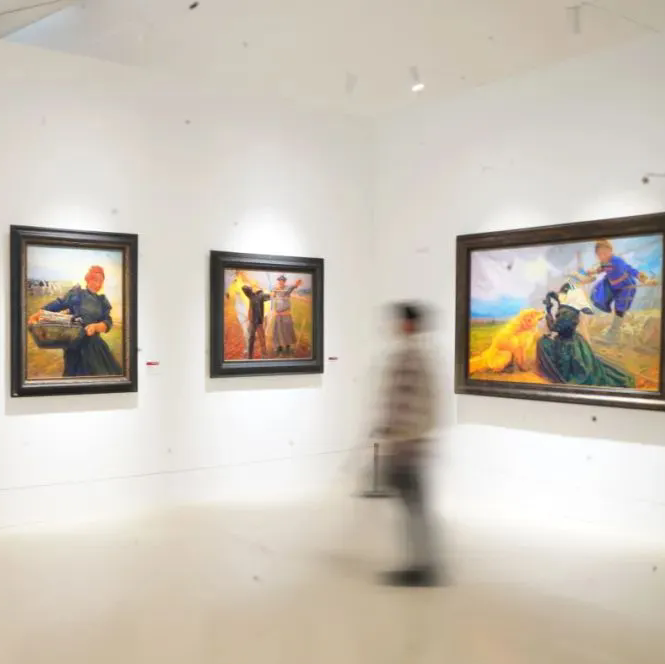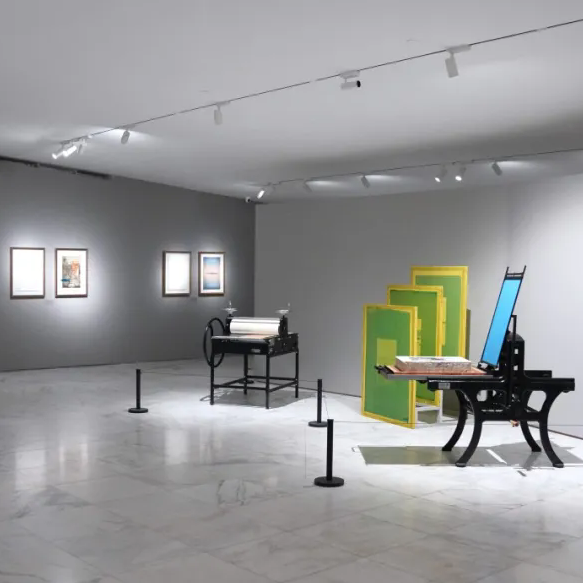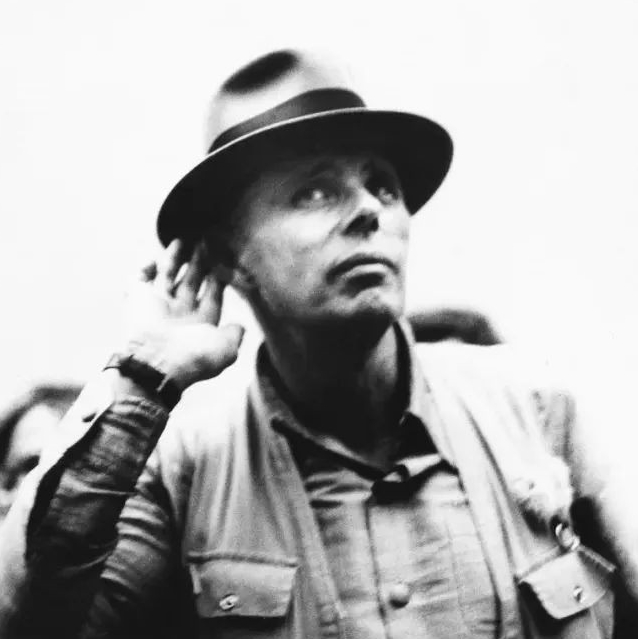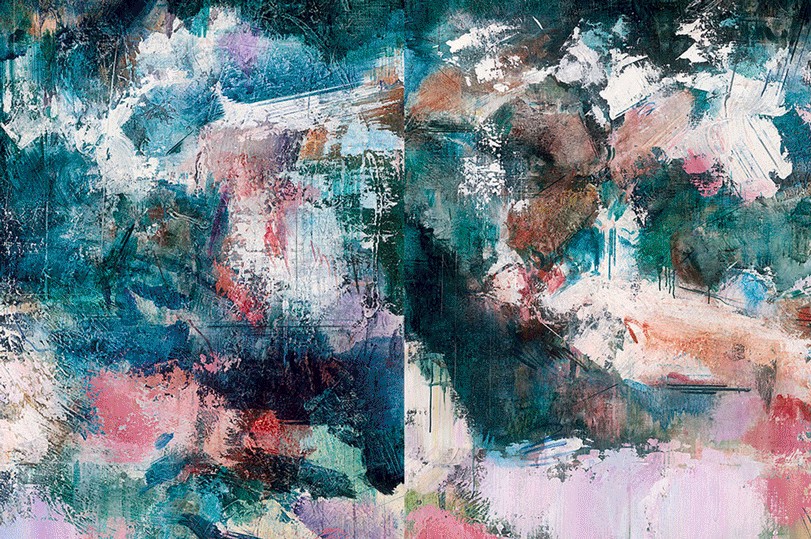
On July 16th, 2022, Wang Yan’s solo exhibition “Visible Wander” opened at Shixiang Space in Beijing. It aims to present the artistic exploration of the oil painter named Wang Yan over the last seven years, who came from northeast China, which also enables audiences to comprehend the artist’s inner world through his brushwork and artistic forms.

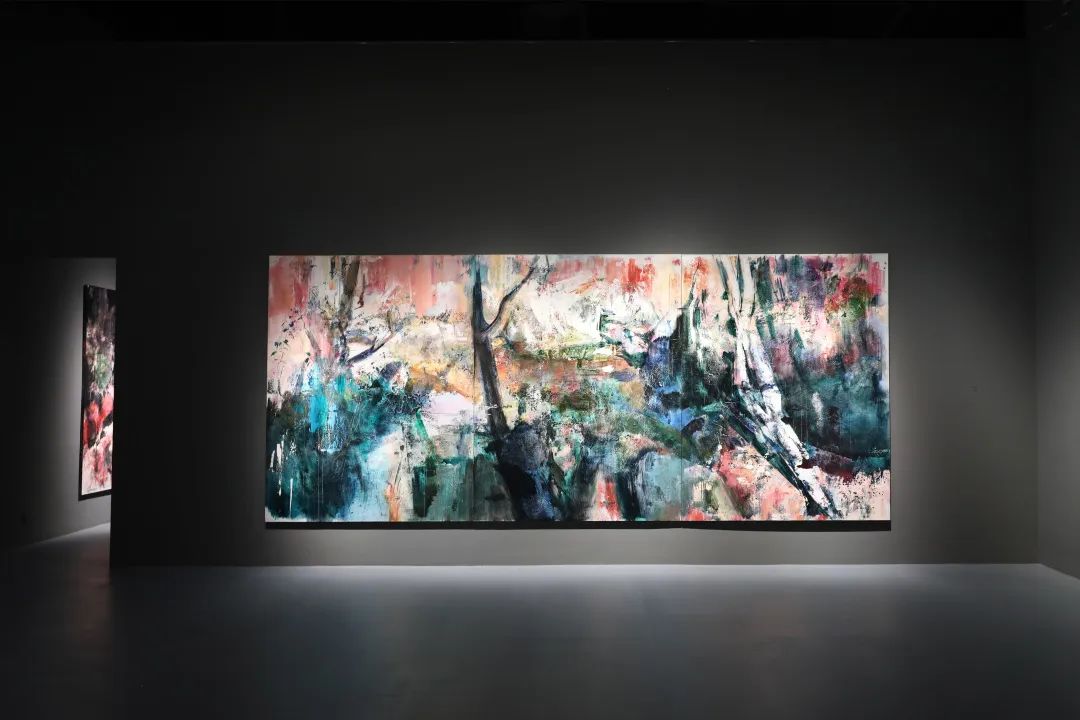

Exhibition View
Visible Wander
At the end of the exhibition is a replica of Wang’s masterpiece, “The Boy Who Seeks Balance at Dusk”, which won the silver prize at the 7th National Exhibition of Fine Arts. Also, the artwork made Wang Yan become famous in his early period within the emerging generation of artists after the reform and opening up in China.

The Boy Who Seeks Balance at Dusk, Oil on canvas, 175×162cmcm, 1989
The painting involves character and scenery. Both of them construct urban paintings that reflect the characteristics of the Enlightenment period in the 1980s. Compared with themed works on the fragments of the urban life , such as “On the Road”, “Falling Spirit”, the series of “Dead Birds”, “Memory Fragments”, etc., Wang’s new series of works “Azure Water and Secluded Trace”, “Leisurely Thoughts about the Rippling Yi River”, etc., have changed the style from the representational expression to the abstract expression. Wang expresses the mental state of contemporary people through the depiction of nature, to trigger audiences’ thoughts about spiritual problems.

Falling Spirit No.8, Oil on canvas, 240×190cmm, 2006

Amnesiac Man, Acrylic on canvas,240×190cm, 2006 Azure Water and Secluded Trace 3, Acrylic on canvas, 300x600cm, 2015
Azure Water and Secluded Trace 3, Acrylic on canvas, 300x600cm, 2015
In the meantime, Wang combined the painting skills he learned from LuXun Academy of Fine Arts, linear creativity, as well as numerous research about modernity and visual composition to create new poetic and oriental flavored artworks, and he also made them more vivid.
 Leisurely Thoughts about the Rippling Yi River 30, Acrylic on canvas, 50×150cm, 2017
Leisurely Thoughts about the Rippling Yi River 30, Acrylic on canvas, 50×150cm, 2017 Leisurely Thoughts about the Rippling Yi River 28, Acrylic on paper, 50×150cm, 2017
Leisurely Thoughts about the Rippling Yi River 28, Acrylic on paper, 50×150cm, 2017
Wang’s paintings also present a form of the expression about the specific feelings and artistic concepts. Due to the urbanization expansion on the social level, Wang moved his studio from the urban area to the suburbs, the scenery and environment were different from before, which significantly impacted on his drawing style. The original brushwork was rigorous and shapely, but it gradually became expressive and degage. Wang was influenced by “cold zone culture” and “rational painting” that beyond the academy system, so that he triggered transcendent nature and mysticism with a religious quality, and embarked on the description and exploration of the individual mental state in the process of urbanization.

On the Road, Oil on canvas, 160×170cm, 1996
Wang’s painting style has changed from the concrete to the abstract, but his modern art core did not change, which is intrinsically related to the modeling training and aesthetic influence that the artist has learnt from the LuXun Academy of Fine Arts.
 Untitled II, Acrylic on canvas, 60×100cm, 2021
Untitled II, Acrylic on canvas, 60×100cm, 2021
Wang’s paintings also express a certain feeling and the artistic concept, as he makes the themes of his paintings become the export of his expression. Although his current painting style is different from his early works, the vertical and horizontal structure is consistent, which shows the artist’s visual structure, as well as his psychological structure. After decades of continuous research, absorption and integration of resources about modernity and visual composition, he combines poetic, Eastern art and the structural relationship reflected by modern art to form his own unique artistic appearance.
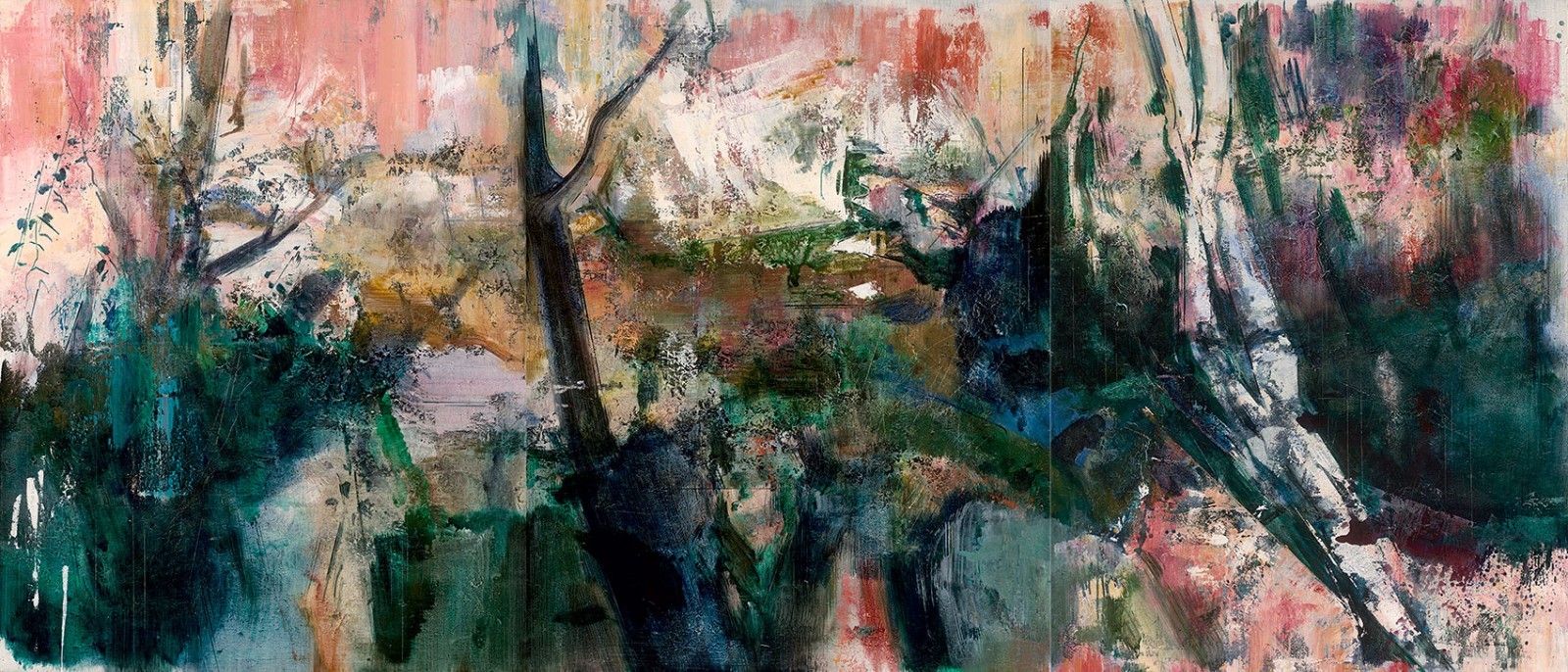 Azure Water and Secluded Trace 9, Acrylic on canvas, 240×570cm, 2015
Azure Water and Secluded Trace 9, Acrylic on canvas, 240×570cm, 2015 Azure Water and Secluded Trace 14, Acrylic on paper, 56×158cm, 2019
Azure Water and Secluded Trace 14, Acrylic on paper, 56×158cm, 2019
Invisible Wander
From the perspective of the artist’s creative career, “Visible Wander” is the expression of painting concepts. However, “Invisible Wander” is the expression of the special artistic outlook of northeast painters’ generations that includes Wang Yan, and traditions of LuXun Academy of Fine Arts.
Wang Yan was born in Anshan, Liaoning province, China. He started studying fine art at the LuXun Academy of Fine Arts in 1977. After graduation, he worked there to teach and explore his personal artistic creation. Later on, he served as a professor and master’s supervisor at the Second Studio, the Department of Oil Painting. The article “Zhao Dajun’s Early Sketch Concepts and the Enlightenment of Modernist Painting” written by Wang, expressed the mentoring relationship between Mr. Zhao and Wang, and it also discussed how to form a stable creative concept on illuminating meaning for artists. Meanwhile, Wang recalled the disadvantages of cultivating stereotypical painters with the advocacy of realistic sketches.
Among the second-generation oil painters of LuXun Academy of Fine Arts, Zhao Dajun is special because of his teaching tendency. Realism has a deep influence on him. His artistic expansion, foresight and particular qualities attract plenty of third-generation northeastern oil painters.

Hercules, Zhao Dajun, Sketch on paper, 71×45cm, 1977

Class Assignment, Wang Yan, in Zhao Dajun’s class
sDuring the period that Wang learned to sketch from Zhao, Wang obtained the inspiration from “Zhao's plaster statute sketch”, which explores painting values through the objects seen by the naked eye. There is an inherited relationship between the “Reality” derived from the observation method proposed by Cezanne and Wang’s theory.

Geometric Bodies, Zhao Dajun, Watercolor on paper, 27.5×37cm, 1962

The House with Chimney, Wang Yan, Oil on canvas, 90×173cm, 1989

First Dog-days, Wang Yan, Oil on canvas, 190×180cm, 1994
Zhang Zhijian, a student of Mr. Zhao and Mr. Wang, is the Deputy Dean of the Fine Art School at LuXun Academy of Fine Arts. He summarized the sketching teaching mode at LuXun Academy of Fine Arts, which applies the factors of modernist painting into the fundamental teaching of LuXun Academy of Fine Arts, and makes the creators actively express the state of objectives. The impact of this mode has been inherited in students’ artworks among the third-generation painters.



The Series of Dead Birds, Acrylic on canvas, 100×100cm, 2004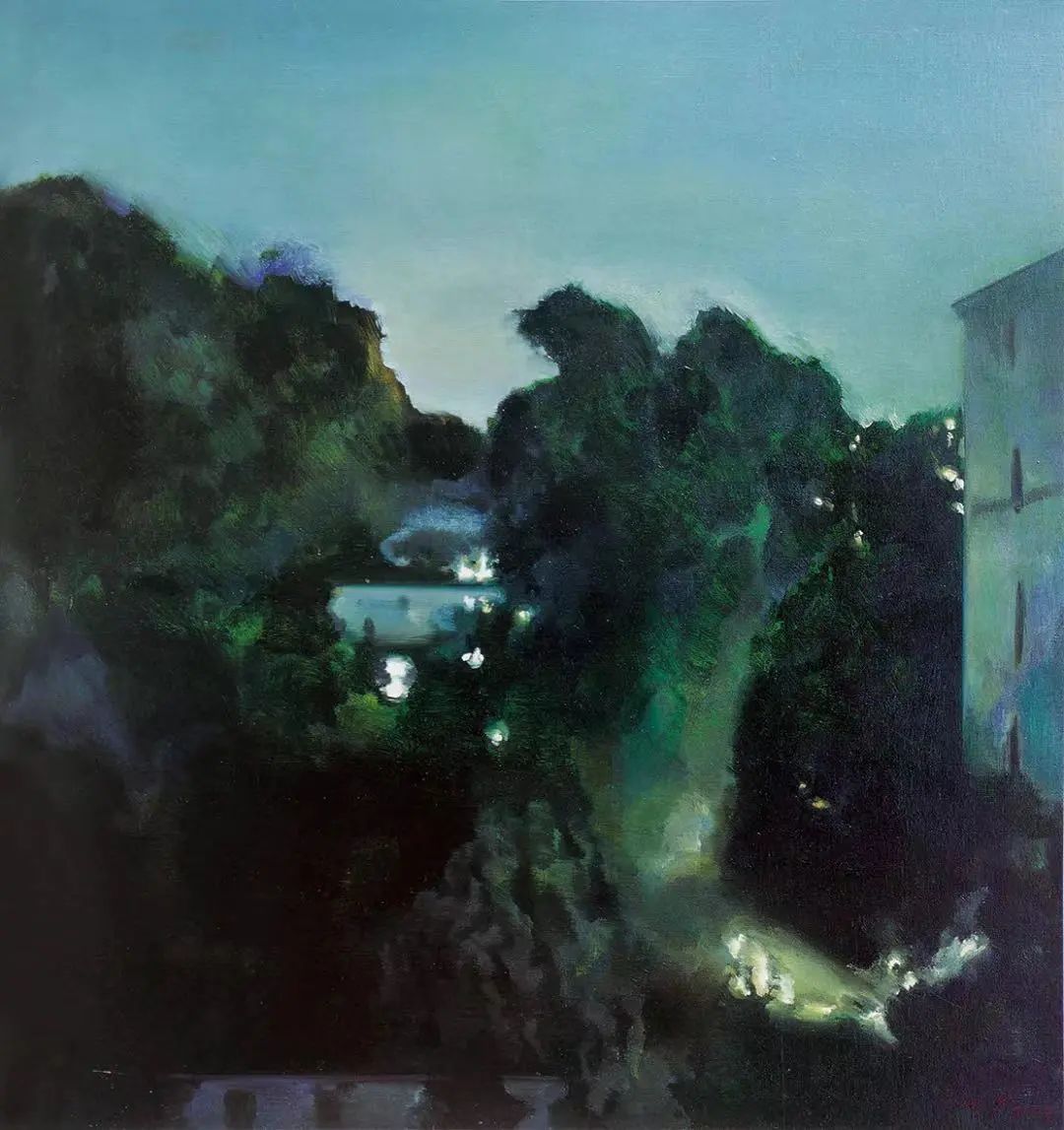
A Stormy Night, Wang Yan, Oil on canvas, 100×100cm, 2004
In the Wang's recent artworks, he utilized plenty of powerful lines to imply the body movement and curves that form a landscape and tried to penetrate the concrete in the picture, in order to obtain the core of the painter's inner vision and make audiences feel the power of placatory, self-sufficiency and self-improvement.
 Azure Water and Secluded Trace 9, Acrylic on canvas, 240×380cm, 2017
Azure Water and Secluded Trace 9, Acrylic on canvas, 240×380cm, 2017
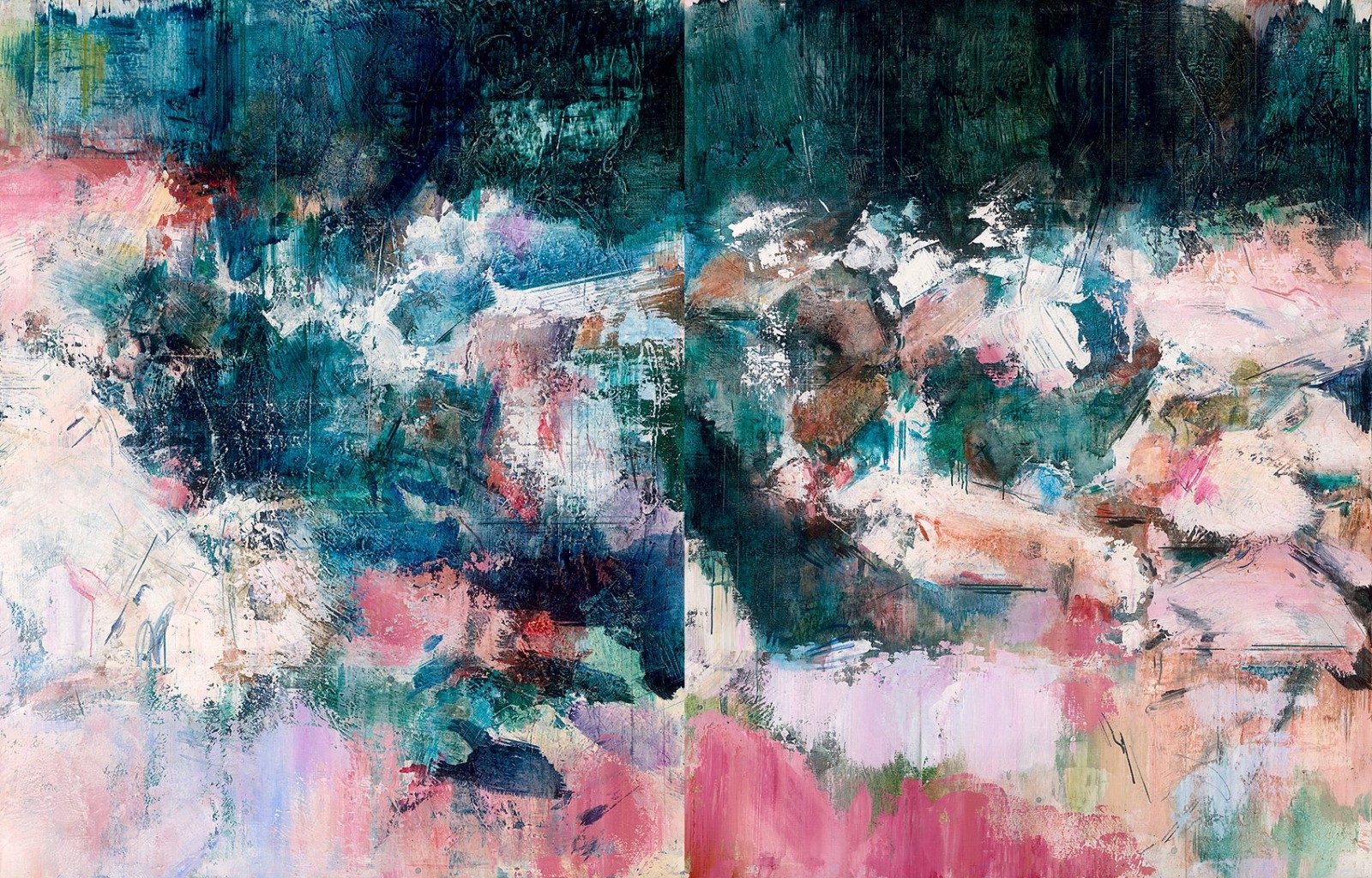 Azure Water and Secluded Trace 10, Acrylic on canvas, 240×380cm, 2017
Azure Water and Secluded Trace 10, Acrylic on canvas, 240×380cm, 2017
There is no difference between Wang’s realistic works and abstract landscape works as they are not confined to the simple narrative and themes, but they turn the visual value into an expression of the artist’s experience, perception and consideration.
Text by Mengxi, translated by Katherine Zhang and edited by Sue/CAFA ART INFO
Image courtesy Shixiang Space
About the exhibition

Dates: 16/07/2022 – 15/09/2022
Academic Chair: Jia Fangzhou
Curator: Bao Dong
Venue: Shixiang Space


